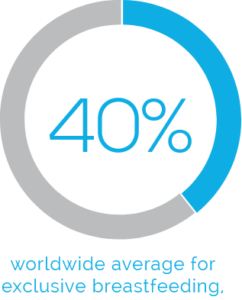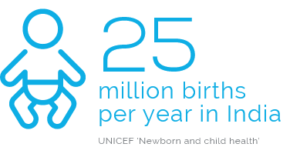Is the Indian infant formula market set for major growth?
Human milk is the best nutrition for infants, it is the gold standard and today, with only 40% worldwide average for exclusive breastfeeding, governments and other important organizations such as the World Health Organization, are trying to increase breastfeeding rates. India is an example of governmental success. India’s infant formula and baby food consumption rates have been among the lowest in the world.
 This is largely the result of legislation. The Infant Milk Substitutes, Feeding Bottles, and Infant Foods (Regulation of Production, Supply and Distribution) Act was introduced in 1992 to promote breastfeeding across the country.
This is largely the result of legislation. The Infant Milk Substitutes, Feeding Bottles, and Infant Foods (Regulation of Production, Supply and Distribution) Act was introduced in 1992 to promote breastfeeding across the country.
Known as the IMS Act, it built on the World Health Assembly’s International Code for Marketing of Breast Milk Substitutes of 1981. Among other things, it bans any form of promotion of infant formula or food marketed to children up to two years of age, with violations potentially resulting in fines and even imprisonment. The statistics suggest that the IMS Act, which was strengthened in 2003, has significantly boosted breastfeeding rates.
Legislation to promote breastfeeding

The Global Breastfeeding Scorecard 2019 shows that, while only 43% of infants worldwide are exclusively breastfed by five months, the figure in India is 58%.
As mother’s milk offers the optimal nutrition for the developing child, this relatively high rate of exclusive breastfeeding has played an important role in improving health outcomes for infants across India.

Demand for formula
 However, where breastfeeding is not possible, high-quality infant formula provides the best alternative.
However, where breastfeeding is not possible, high-quality infant formula provides the best alternative.
Despite the low consumption rate in recent decades, India’s vast population has ensured there has always been considerable demand for formula. The country currently accounts for almost a fifth of annual births worldwide, with around 25 million children born every year . There are also indications that demographic changes are driving further growth in the breast milk substitute market, with commentators pointing to the increase of middle- and upper-class consumers, increased urbanization, and the adoption of western lifestyles. Indeed, Euromonitor data shows that sales of baby food – including formula – are increasing in India as a result of parents’ busy lifestyles.

With urbanization there is an increase in sales of baby formula
With India now shaping up to be one of the most important infant formula markets in the world, it is vital that manufacturers make sure they are meeting consumers’ expectations. As the Centre for Consumer Studies has observed, purchase patterns for infant food products in India have had an “emphasis on quality, convenience and food safety.”

The authorities in India have invested significant efforts to drive awareness of the benefits of mother’s milk. While looking at maximising these efforts for consumers who due to some reason have to rely on formula, it is important to provide products that replicate breast milk’s qualities as closely as possible.
Access To Nutrition Index ‘India Spotlight Index 2016’
Euromonitor ‘Baby Food in India’ (2019)
Centre For Consumer Studies ‘Baby Food’ (2015)
Demographic changes are driving formula market growth

